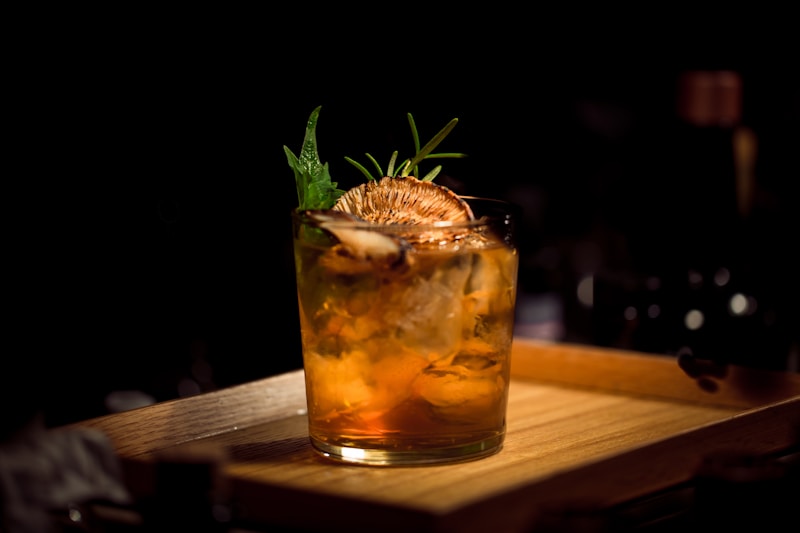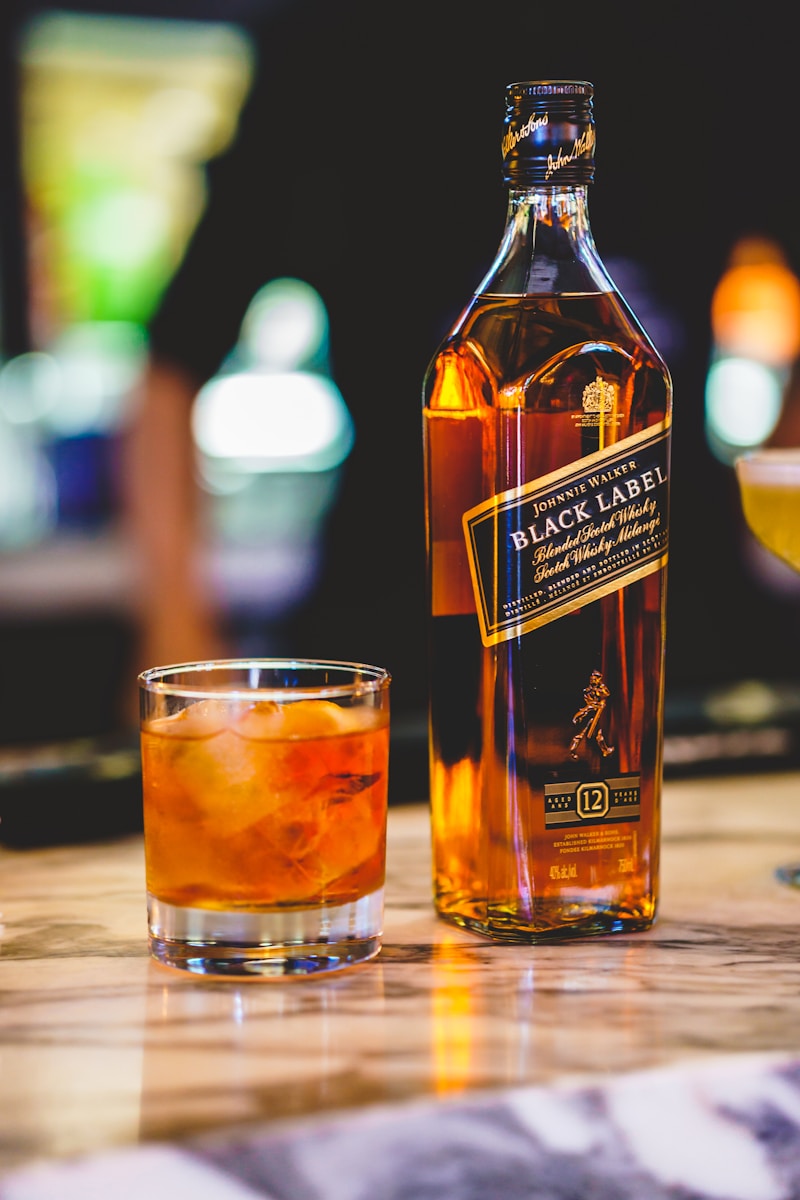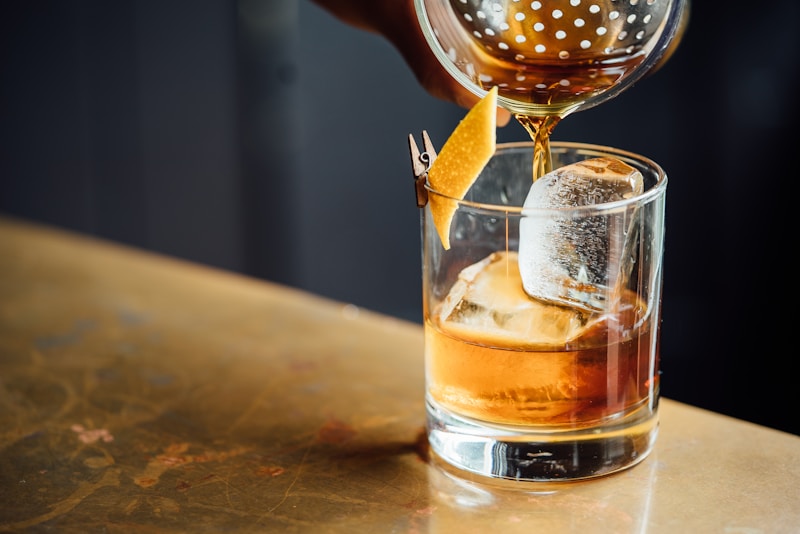This guide covers the calorie counts of popular aperitifs and digestifs, which options fit a low calorie lifestyle, and how to enjoy these drinks mindfully whether at home or in a fine dining setting.
Understanding Aperitifs and Digestifs

What is an Aperitif?
An aperitif (from Latin aperire, meaning to open) is a drink served before a meal to stimulate appetite. These drinks typically share certain characteristics:
- Dry or bitter flavors: Not sweet, designed to awaken the palate
- Lower alcohol: Usually 15 to 25% ABV
- Herbal or botanical notes: Ingredients that stimulate digestion
- Light and refreshing: Should not fill you up before the meal
What is a Digestif?
A digestif is served after a meal to aid digestion and provide a satisfying conclusion to dining. Characteristics include:
- Higher alcohol content: Often 30 to 45% ABV
- Rich, complex flavors: Meant to be sipped slowly
- Herbal components: Traditional digestive aids
- Small serving sizes: Quality over quantity
Low Calorie Aperitifs
1. Champagne or Dry Sparkling Wine
Calories: 90 to 95 per 4 oz pour | Carbs: 1 to 2g
The classic French aperitif. Champagne and quality brut sparkling wines are naturally low in residual sugar and make elegant pre dinner drinks.
Best choices:
- Brut Champagne: Less than 12g/L residual sugar
- Extra Brut: Less than 6g/L residual sugar
- Brut Nature: Zero dosage, driest option
- Quality Cava or Prosecco: More affordable alternatives
2. Dry Sherry
Calories: 75 to 90 per 2 oz pour | Carbs: 1 to 2g
Fino and Manzanilla sherries are bone dry and served chilled, making them perfect aperitifs with minimal calories.
Best choices:
- Fino: Lightest, most delicate dry sherry
- Manzanilla: Coastal fino with saline notes
- Amontillado: Slightly richer but still dry
Avoid: Cream sherry, Pedro Ximenez, and other sweet styles which can exceed 150 calories per serving.
3. Campari and Soda

Calories: 80 to 100 | Carbs: 8 to 12g
Classic Italian aperitif. Campari on its own contains sugar, but diluting with soda water creates a refreshing drink at reasonable calories.
Recipe:
- 1.5 oz Campari
- 4 oz club soda
- Orange slice
4. Aperol Spritz (Light Version)
Calories: 120 to 150 | Carbs: 10 to 15g
The trendy Italian spritz can be made lighter by adjusting proportions and using more soda water.
Light recipe:
- 1.5 oz Aperol
- 2 oz prosecco
- 2 oz club soda
- Orange slice
Note: Standard spritzes at bars often use 3 oz Aperol and minimal soda, pushing calories to 200+.
5. Dry Vermouth
Calories: 65 to 80 per 2 oz | Carbs: 4 to 6g
Dry vermouth served on the rocks with a twist is a sophisticated low calorie aperitif common in European bars.
Best choices:
- Noilly Prat Extra Dry: French classic
- Dolin Dry: Herbal and complex
- Martini Extra Dry: Widely available
6. Lillet Blanc (Light)
Calories: 85 to 100 per 2 oz | Carbs: 6 to 8g
This French aperitif wine is traditionally served over ice with an orange slice. While it contains some sugar, a moderate pour keeps calories reasonable.
Recipe:
- 2 oz Lillet Blanc
- Ice
- Orange slice
- Optional: splash of club soda to extend
Low Calorie Digestifs
1. Grappa
Calories: 80 to 100 per 1.5 oz | Carbs: 0g
Italian grape pomace brandy is pure distilled spirit with no added sugar. The intense flavor means a small pour satisfies.
Serving: Small snifter, room temperature or slightly chilled
Best choices:
- Young grappa: Clear, fiery, rustic
- Aged grappa: Smoother, more complex
- Single grape variety: Moscato grappa is particularly aromatic
2. Cognac or Brandy

Calories: 97 per 1.5 oz | Carbs: 0g
Quality cognac or brandy is meant to be sipped slowly after dinner. The complex flavors developed through aging make a small pour deeply satisfying.
Serving: 1 to 1.5 oz in a snifter, warmed by hand
Best choices:
- VS Cognac: Younger, fruitier
- VSOP Cognac: Minimum 4 years aging, more complex
- XO Cognac: Minimum 10 years, special occasions
3. Amaro (Varies Widely)
Calories: 70 to 140 per 1.5 oz | Carbs: 8 to 20g
Italian bitter liqueurs vary significantly in sweetness. Some are relatively diet friendly while others are sugar bombs.
Lower calorie amaros:
- Fernet Branca: ~70 calories per 1.5 oz, very bitter
- Montenegro: ~85 calories, balanced bitter sweet
- Averna: ~95 calories, Sicilian classic
Higher calorie amaros:
- Amaretto: 140+ calories, very sweet
- Sambuca: 150+ calories, high sugar
- Frangelico: 130+ calories, sweet hazelnut
4. Scotch or Whiskey
Calories: 97 per 1.5 oz | Carbs: 0g
Single malt scotch or quality bourbon makes an excellent digestif. The complexity rewards slow sipping.
Serving: Neat or with a splash of water, no ice
5. Eau de Vie
Calories: 80 to 100 per 1.5 oz | Carbs: 0g
Clear fruit brandies from France and Germany are distilled without added sugar. Pear (Poire Williams), cherry (Kirsch), and raspberry (Framboise) are popular choices.
Note: True eau de vie is clear and unsweetened. Fruit liqueurs with the same names are sweetened and much higher in calories.
6. Calvados
Calories: 97 per 1.5 oz | Carbs: 0g
Apple brandy from Normandy, France. Like cognac, it is distilled and aged without added sugar.
Aperitifs and Digestifs to Avoid
| Drink | Calories (per 1.5 oz) | Problem |
|---|---|---|
| Bailey’s Irish Cream | 140 | Cream and sugar |
| Kahlua | 135 | High sugar coffee liqueur |
| Amaretto | 140 | Sweet almond liqueur |
| Grand Marnier | 120 | Orange liqueur with cognac |
| Drambuie | 125 | Honey and herb liqueur |
| Cream Sherry | 150 | Sweetened fortified wine |
| Port (Ruby or Tawny) | 150 | Sweet fortified wine |
| Limoncello | 115 | High sugar lemon liqueur |
| Sambuca | 150 | Sweet anise liqueur |
| Frangelico | 130 | Sweet hazelnut liqueur |
Classic Aperitif Cocktails Made Lighter
Light Negroni
Calories: 140 to 160 | Carbs: 10 to 14g
The classic Negroni uses equal parts gin, Campari, and sweet vermouth. Adjusting proportions reduces calories while maintaining the essential character.
Light recipe:
- 1.5 oz gin
- 0.75 oz Campari
- 0.75 oz sweet vermouth
- Orange peel
Compare to standard: Equal 1 oz pours would be ~185 calories
Light Americano
Calories: 100 to 120 | Carbs: 12 to 16g
The Americano predates the Negroni and is naturally lighter due to club soda.
Recipe:
- 1 oz Campari
- 1 oz sweet vermouth
- Club soda to top
- Orange slice
Kir
Calories: 100 to 120 | Carbs: 5 to 8g
White wine with a small amount of creme de cassis. Using minimal liqueur keeps this classic aperitif light.
Light recipe:
- 4 oz dry white wine (Aligote traditional)
- 0.25 oz creme de cassis
Note: Kir Royale uses champagne and is similarly caloric.
Light Martini
Calories: 120 to 140 | Carbs: 0 to 2g
A dry martini is already relatively low calorie. The key is keeping it simple.
Recipe:
- 2 oz gin or vodka
- 0.5 oz dry vermouth
- Olive or lemon twist
Digestif Strategies

The Art of the Small Pour
Digestifs are meant to be savored, not gulped. A 1 oz pour of quality cognac can last longer and provide more satisfaction than a larger drink consumed quickly.
- Use proper glassware: Small snifters or cordial glasses
- Sip, don’t shoot: Take tiny sips over 15 to 20 minutes
- Appreciate complexity: Notice how flavors evolve as the spirit warms
- Quality over quantity: One ounce of XO cognac beats two ounces of cheap brandy
Skip Dessert, Choose Digestif
A small digestif is often fewer calories than dessert:
| Option | Calories |
|---|---|
| 1.5 oz Cognac | 97 |
| 1.5 oz Grappa | 85 |
| 1.5 oz Fernet | 70 |
| Slice of cake | 400+ |
| Tiramisu | 450+ |
| Creme brulee | 350+ |
The digestif provides a satisfying conclusion to the meal at a fraction of dessert’s caloric impact.
Herbal and Bitter Aids Digestion
Traditional digestifs contain herbs believed to aid digestion. While scientific evidence varies, ingredients like gentian, artichoke, and bitter orange have been used for centuries.
Bitter digestifs like Fernet Branca are particularly associated with settling the stomach after a heavy meal.
Restaurant and Bar Strategies
Ordering Aperitifs
- Ask for dry: Specify dry vermouth, dry sherry, brut champagne
- Request club soda: Campari and soda is lighter than Campari and orange juice
- Light spritz: Ask for extra soda in your Aperol spritz
- Simple options: A glass of champagne or fino sherry is always safe
Ordering Digestifs
- Request small pours: Most restaurants will accommodate a 1 oz pour
- Choose unsweetened: Grappa, cognac, whiskey over liqueurs
- Ask about amaros: Inquire which options are less sweet
- Skip the cream: Avoid Bailey’s, Kahlua, and similar sweet liqueurs
Navigating Italian Restaurants
Italian restaurants often offer complimentary digestifs. Keep these calorie facts in mind:
- Best choice: Grappa (no sugar, ~85 cal)
- Good choice: Fernet Branca (bitter, ~70 cal)
- Moderate: Montenegro or Averna (~90 cal)
- Avoid: Limoncello (high sugar, ~115 cal)
- Skip: Sambuca (very high sugar, ~150 cal)
Building a Home Bar
Essential Low Calorie Aperitifs
- Dry vermouth: Noilly Prat or Dolin Dry
- Campari: For spritzes and Negronis
- Fino sherry: Keep refrigerated
- Brut sparkling wine: Keep a bottle cold
Essential Low Calorie Digestifs
- Quality cognac: VSOP or better
- Grappa: Aged version for smoothness
- Fernet Branca: The bartender’s handshake
- Scotch or bourbon: For whiskey lovers
Calorie Comparison Chart
| Category | Drink | Calories | Diet Friendly? |
|---|---|---|---|
| Aperitif | Champagne (4 oz) | 90 | Yes |
| Aperitif | Fino Sherry (2 oz) | 75 | Yes |
| Aperitif | Dry Vermouth (2 oz) | 70 | Yes |
| Aperitif | Campari Soda | 90 | Yes |
| Aperitif | Light Aperol Spritz | 130 | Moderate |
| Aperitif | Standard Aperol Spritz | 200 | No |
| Digestif | Grappa (1.5 oz) | 85 | Yes |
| Digestif | Cognac (1.5 oz) | 97 | Yes |
| Digestif | Fernet (1.5 oz) | 70 | Yes |
| Digestif | Scotch (1.5 oz) | 97 | Yes |
| Digestif | Limoncello (1.5 oz) | 115 | No |
| Digestif | Bailey’s (1.5 oz) | 140 | No |
Conclusion
Aperitifs and digestifs represent refined drinking at its best. The good news for dieters: many traditional options are naturally low in calories. Dry wines, pure spirits, and bitter liqueurs often contain less sugar than modern sweetened alternatives. A glass of fino sherry before dinner and a small pour of cognac after provides the full European dining experience at under 200 total calories.
The key is choosing dry aperitifs and unsweetened digestifs, keeping pours small, and savoring rather than gulping. Quality over quantity is not just good advice for calorie control; it is the entire philosophy behind these drinks.
Use our DrinkLeader database to look up specific aperitifs and digestifs and plan your sophisticated drinking strategy.
Nutritional values based on standard servings. Restaurant pours may vary. Enjoy these drinks as part of a balanced approach to dining and entertaining.
]]>